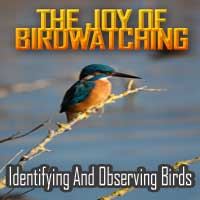


Nurturing Nature While Exploring

In a world increasingly aware of the environmental impact of human activities, outdoor enthusiasts and adventure seekers are shifting their focus towards eco-conscious wilderness journeys. These journeys represent a new wave of outdoor exploration that not only allows individuals to connect with the natural world but also emphasizes responsible and sustainable practices. Eco-conscious wilderness journeys are a way to explore and appreciate the great outdoors while leaving a minimal footprint on the environment.
Respecting The Wild: Eco-conscious wilderness journeys start with a fundamental principle: respect for the wild. It's about recognizing that nature is not a playground but a delicate ecosystem that requires protection. When embarking on such journeys, adventurers make a conscious effort to minimize their impact on the environment by adhering to Leave No Trace principles. This includes packing out all waste, avoiding disturbing wildlife, and staying on designated trails.
Sustainable Gear And Practices: Eco-conscious adventurers understand that the gear they choose can have a significant environmental impact. They opt for eco-friendly and sustainable equipment, such as recyclable and biodegradable materials. Additionally, they practice responsible resource management by conserving water, reducing energy consumption, and minimizing waste generation during their journeys.
Low-Impact Camping: Camping is an integral part of wilderness journeys, and eco-conscious adventurers are known for their low-impact camping practices. This involves setting up camp in designated areas, using portable stoves for cooking instead of open fires, and following the "Leave No Trace" camping guidelines to ensure that the natural surroundings remain unspoiled.
Wildlife Observation And Conservation: Eco-conscious wilderness journeys often involve opportunities for wildlife observation. Rather than disrupting the animals they encounter, eco-conscious adventurers approach wildlife with respect and care. They maintain a safe distance and use binoculars or telephoto lenses to avoid causing distress to the animals. Moreover, many eco-conscious adventurers participate in wildlife conservation efforts and support organizations dedicated to preserving natural habitats.
Educational Components: These journeys aren't just about exploration; they're also a source of environmental education. Eco-conscious adventurers engage in continuous learning, understanding the ecosystems they visit and the local flora and fauna. Many choose guided tours led by knowledgeable naturalists and experts who provide insights into the region's ecology, creating a deeper connection between the participants and the environment.
Community Involvement: Eco-conscious adventurers often engage with local communities and support eco-tourism initiatives. By purchasing locally sourced products, hiring local guides, and contributing to the economies of nearby towns, they ensure that the benefits of their journeys extend to the people living in these areas.
Advocacy And Outreach: Finally, eco-conscious wilderness journeys often inspire adventurers to become advocates for environmental preservation. They share their experiences, raise awareness about the importance of protecting wilderness areas, and actively participate in conservation efforts.
In a world where the wilderness is increasingly threatened by climate change and overexploitation, eco-conscious wilderness journeys serve as a beacon of hope. These journeys prove that it is possible to explore the natural world while actively participating in its preservation. By embracing the principles of respect, sustainability, education, and advocacy, eco-conscious adventurers set a positive example for the future of outdoor exploration, ensuring that the wild places we cherish remain pristine for generations to come.
More Than Just A Game
 While Ultimate Frisbee is celebrated for its emphasis on sportsmanship, the competitive side of the sport should not be underestimated. As the sport has grown and matured, players have honed their skills, developed advanced strategies, and pushed the boundaries of athleticism. Competitive Ultimate showcases the sport's evolution from a casual pastime to a serious athletic endeavor.
While Ultimate Frisbee is celebrated for its emphasis on sportsmanship, the competitive side of the sport should not be underestimated. As the sport has grown and matured, players have honed their skills, developed advanced strategies, and pushed the boundaries of athleticism. Competitive Ultimate showcases the sport's evolution from a casual pastime to a serious athletic endeavor.
One of the defining features of competitive Ultimate is the level of physicality involved. Players often engage in intense sprinting, jumping, and diving to make plays or defend against their opponents. The sport's fast-paced nature demands not only speed and agility but also endurance and strength. Competitive players are in top physical condition, allowing them to perform at their best throughout a match that can last up to 90 minutes or more.
Strategic gameplay is another hallmark of competitive Ultimate. Teams employ a variety of offensive and defensive strategies to gain an edge over their opponents. Offense focuses on precise throws, timed cuts, and well-coordinated teamwork to advance the disc down the field and score points. On the defensive side, players employ zone defenses, person-to-person marking, and strategic positioning to thwart their opponents' advances.




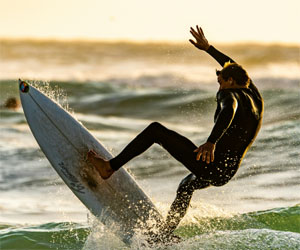

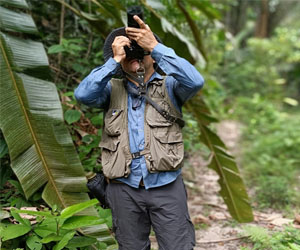

Mastering The Art Of Paintball Marksmanship
 Precision shots in The Colorful Battle are the key to turning the tide of the game in your favor. Whether you're a seasoned pro or a novice eager to make your mark, honing your marksmanship skills is essential. Here's a closer look at the importance of precision shots and how to master this art in the world of paintball.
Precision shots in The Colorful Battle are the key to turning the tide of the game in your favor. Whether you're a seasoned pro or a novice eager to make your mark, honing your marksmanship skills is essential. Here's a closer look at the importance of precision shots and how to master this art in the world of paintball.
Accuracy Is Everything: In The Colorful Battle, every shot counts. Precision shots not only eliminate opponents but also conserve precious ammunition. In a game where resources are limited, making each shot count is crucial for victory.
Effective Eliminations: Hitting your target with precision ensures that your opponent is eliminated from the game. This can significantly impact the balance of power on the battlefield and increase your team's chances of success.
Strategic Advantage: Precision shots allow you to eliminate key players on the opposing team, disrupting their tactics and creating opportunities for your team to advance and secure objectives. Taking out the opposition's sharpshooters or flag carriers can be a game-changer.
Conserving Ammunition: Paintballs are limited, and running out of ammunition can leave you vulnerable. Precise shooting not only eliminates opponents but also reduces the frequency of reloading, giving you more time to focus on strategy and positioning.
So, how can you master the art of precision shots in The Colorful Battle?
Practice, Practice, Practice: Like any skill, marksmanship in paintball improves with practice. Regularly visit your local paintball field to refine your shooting technique. Experiment with different shooting stances and angles to find what works best for you.
Wave Dynamics In Surfing
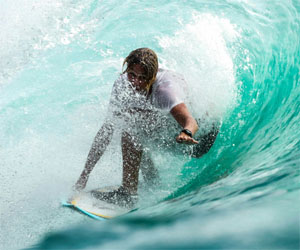 Wave Direction: Wave direction is an essential component of wave dynamics. The direction from which a wave approaches a coastline or surf break significantly influences the ride. Surfing enthusiasts pay close attention to the angle at which waves approach the shore. A perfectly aligned wave can offer a long, thrilling ride, while a misaligned wave might break in a less-than-ideal manner.
Wave Direction: Wave direction is an essential component of wave dynamics. The direction from which a wave approaches a coastline or surf break significantly influences the ride. Surfing enthusiasts pay close attention to the angle at which waves approach the shore. A perfectly aligned wave can offer a long, thrilling ride, while a misaligned wave might break in a less-than-ideal manner.
Wave Period: Wave period, often expressed in seconds, refers to the time it takes for two consecutive wave crests to pass a fixed point. Longer wave periods are indicative of powerful and well-organized swells, resulting in cleaner and more rideable waves. Shorter wave periods can lead to choppy and less predictable conditions.
Wave Sets: Wave sets consist of groups of waves that arrive consecutively. In between sets, surfers experience lulls, creating moments of anticipation and readiness. Understanding the rhythm of wave sets is crucial for positioning and timing when paddling and catching waves. Surfers need to gauge the intervals between sets to be in the right place at the right time.
Types Of Waves:
The classification of waves based on their shape and breaking behavior plays a significant role in wave dynamics:
Reef Breaks: These waves break over a submerged reef or rocky bottom. Reef breaks can produce fast, hollow waves that are favored by experienced surfers.
Point Breaks: Point breaks are formed by waves breaking along a point of land. They create long, peeling waves that are ideal for graceful rides and maneuvers.
 The thrill of the great outdoors is deeply rooted in the elements of unpredictability and challenge. Whether you're hiking steep terrain, navigating winding rivers, or embarking on a multi-day backpacking expedition, the natural world demands adaptability and resilience. These challenges push your limits and offer a sense of accomplishment that's hard to replicate in any other setting.
The thrill of the great outdoors is deeply rooted in the elements of unpredictability and challenge. Whether you're hiking steep terrain, navigating winding rivers, or embarking on a multi-day backpacking expedition, the natural world demands adaptability and resilience. These challenges push your limits and offer a sense of accomplishment that's hard to replicate in any other setting.
Furthermore, the great outdoors is a place where you can reconnect with your most primal instincts. As you explore the wild, you'll find yourself more attuned to your surroundings—the scent of pine in the air, the call of distant birds, and the sensation of the earth beneath your feet. These sensory experiences awaken a deep connection to the environment, one that is often lost in the hustle and bustle of modern life.
The thrill of the great outdoors is also an opportunity to escape the ceaseless digital noise. With limited or no connectivity, you're free from the constant barrage of emails, social media updates, and text messages. Instead, you're left with the quietude of nature, a chance to listen to the wind rustling through the leaves and to engage in conversations that are truly face-to-face.
Another aspect of the thrill of the great outdoors is the sense of awe it inspires. Whether you're standing on the edge of a canyon, watching a waterfall cascade into a pristine pool, or gazing up at a starlit night sky, nature's grandeur is a humbling experience. The vastness and beauty of the world around us reminds us of our place within it, fostering a deep appreciation for the Earth's wonders.
A Delightful Journey Into Nature's Avian Tapestry
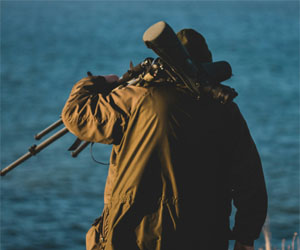 Patience And Observation: At the core of birdwatching is the practice of patience and keen observation. Birdwatchers learn to scan the landscape, often for extended periods, waiting for that fleeting moment when a bird reveals itself. The art lies in the ability to notice subtle details, from the distinctive plumage patterns to the unique behaviors that define each species.
Patience And Observation: At the core of birdwatching is the practice of patience and keen observation. Birdwatchers learn to scan the landscape, often for extended periods, waiting for that fleeting moment when a bird reveals itself. The art lies in the ability to notice subtle details, from the distinctive plumage patterns to the unique behaviors that define each species.
The Language Of Birds: Birdwatching introduces enthusiasts to the intricate language of birds. Through songs, calls, and visual displays, birds communicate with one another, and keen birders become fluent in this avian dialect. They can distinguish between the warning call of a robin and the joyful song of a thrush.